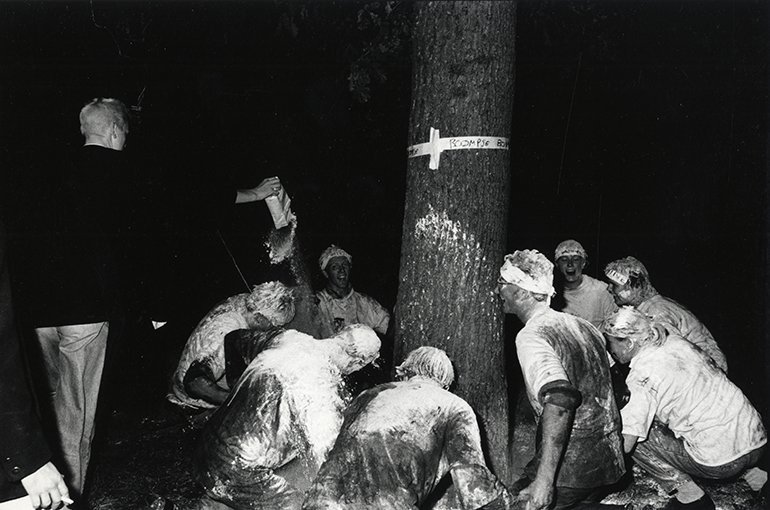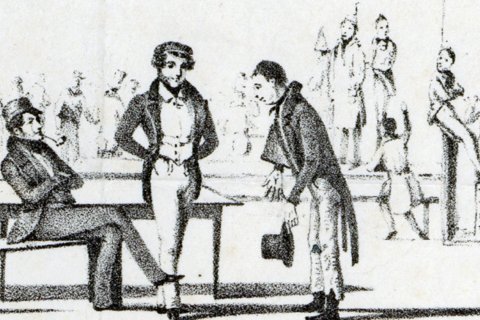Hazing: from beast to man or vice versa
Blog: Dorsman dives into university history

You can set the clock to it. The academic year has only just started and we already see news reports about hazings that got out of hand. They seemed exclusive to Groningen in the past years, but they occur everywhere. The hazing (in Dutch: ontgroening, literally "degreening") proceeds relatively calmly sometimes, but other times resulting in serious physical injuries or even death.
Hazing to death
Just recently, a student in Belgium died after a very violent hazing. And in 1965, a student in Utrecht died as a result of hazing. His head was covered with a so-called soot cap and he suffocated.
Just where does that come from? Has it always been around since there are students? To answer the latter question: yes. Hazing has not always had the same form, but already exists since the founding of the first universities in the twelfth century. In the urban societies in which these universities came about, the students formed their own social groups and they united in so-called nationes or ‘nations’. These were students who came from the same region, who socialised with and provided protection to each other.

Drinking parties at rookies’ expense
In order to join, such students would have to pay (big) sums of money. These entry fees were then used by the senior students to fund big drinking parties. Somewhere down the line, money was no longer enough: first-year students also had to prove they had become adults or humans. The Manuale Scholarium from 1481 speaks of depositio cornuum: deposition of the horns. As in: transforming from beast to man.
These ‘rituals of becoming human’ sometimes got violent, especially because drinking too much also resulted in big brawls between different nations. In Utrecht during the seventeenth century, this regularly happened with the combined Gelderland-Overijssel nation. That got so much out of hand that it became illegal to be a member of such societies. In 1643, eight students were expelled from the university for this reason.
Hazing has not always had the same form, but already exists since the founding of the first universities in the twelfth century.
Joining a secret society
In the eighteenth century, the term ‘groentje’ (rookie, literally ‘greeny’) was used for the first time. The nations had disappeared by that time and so-called ‘groensenaten’ (‘green senates’), student clubs providing access to the student world in a more regulated way, came about later in that century. These clubs led to the founding of the students' corpora in the early nineteenth century. Hazing also became strongly ritualistic and started to resemble the joining of a secret society.

The German student Carl von Wedel described in his memoirs how in 1809 in Utrecht, he was summoned to a strangely dressed little group which called itself the ‘students' senate’. The students sat in a darkened room behind a table. The president was called a prorector and a beadle was present as well. So it was a clear copy of the positions in a real university, which did not amuse the university board at all.
Strange rituals and excessive violence
Von Wedel had to listen to an unintelligible Latin speech and then had to drink a big goblet of wine. Because he refused, the ritual resulted in a serious brawl. The next day, the student peadle took him from his bed and invited him to a drink to settle matters properly. And so it was done.
So hazing has still been accompanied with violence since the end of the eighteenth century. However, it was strongly ritualised and regulated via the corpora. Unfortunately, this does not rule out excesses so far.
Dorsman dives into university history
Out of the thousands of people who study and work at Utrecht University, fewer and fewer of them know anything about the history of this institution. We can do better than that. Leen Dorsman was a Professor of University History until 1 August 2022. Each month on UU.nl, he describes something from the long history of the university that you would want to know or should know.

